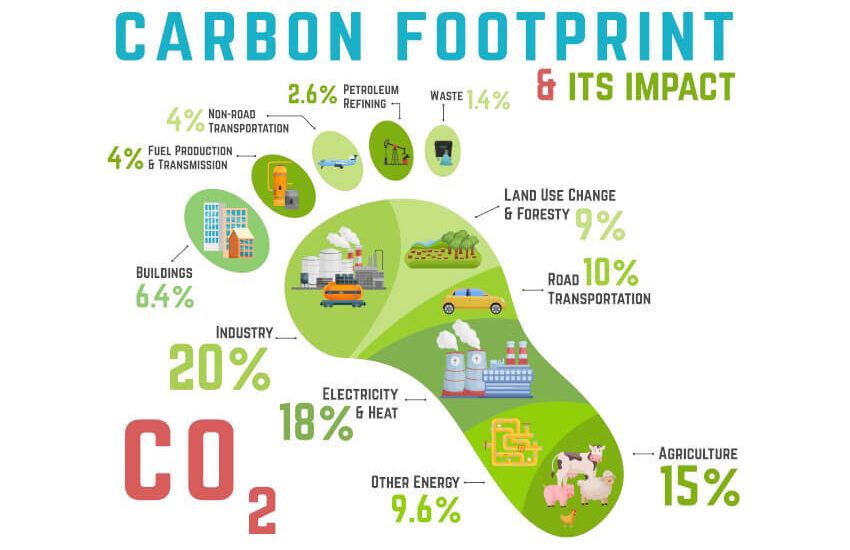The auto and transportation industries have been a significant contributor to global greenhouse gas emissions, and thus, the rise of electric and hybrid vehicles (EVs and HVs) has been hailed as a cornerstone in the battle against climate change. However, understanding the full environmental impact of these vehicles, particularly concerning their carbon footprint over their entire lifecycle, demands a nuanced analysis. This post explores the double edge sword of electric, and hybrid vehicles, considering all aspects from material extraction to production and usage.
Material Extraction and Vehicle Production: A Carbon Intensive Start
Gas Vehicles (GVs)
Conventional gas vehicles generally have a lower carbon footprint during the production phase, primarily because they do not require the rare earth metals and extensive battery systems found in EVs and HVs. Their production involves the extraction of metals like steel and aluminum and manufacturing engines, frames, and other components, which indeed has environmental impacts but tends to be less carbon-intensive compared to the production of EVs and HVs.
Hybrid Vehicles (HVs)
Hybrids vehicles contain both an internal combustion engine and an electric battery, necessitating the extraction of rare earth materials like lithium, nickel, and cobalt for battery production. Consequently, the production carbon footprint of HVs can be higher than that of traditional gas vehicles due to the dual systems.
Electric Vehicles (EVs)
The production of EVs is particularly carbon-intensive due to the large batteries required to power them. The mining, processing, and transportation of rare earth minerals for electric battery production significantly amplify the carbon footprint. Studies indicate that the manufacturing of an electric vehicle generates considerably more carbon emissions compared to traditional vehicles, partially because of the additional energy required for battery manufacturing.
On-R-Road Usage: Closing the Carbon Gap
Gas Vehicles
The ongoing carbon footprint of GVs is significant due to their reliance on fossil fuels, contributing substantially to their lifetime emissions.
Hybrid Vehicles
HVs begin to recoup their initial carbon deficit through improved fuel efficiency and reduced emissions during operation. The synergy between electric and gasoline power in HVs mitigates the overall greenhouse gas emissions during their operational life.
Electric Vehicles
Despite the initial high production emissions, EVs tend to have lower operational emissions, especially when charged with electricity from renewable sources. This allows them to gradually offset their initial carbon footprint, potentially offering a lower total carbon emission across their lifespan.
Estimating the Break-Even Point
Given the disparities in production emissions, identifying the break-even point, where EVs and HVs neutralize their initial carbon debt and potentially provide a net benefit over GVs, is crucial. Various studies propose different break-even points, largely due to the disparities in electricity generation sources, vehicle models, and driving habits across regions.
A general estimation is that EVs can break even with GVs in terms of total carbon emissions within 15,000 to 30,000 miles of driving, depending largely on the cleanness of the electrical grid. HVs may achieve this even sooner due to their ability to use fuel more efficiently.
Wrapping It Up: A Future-Proof Analysis
Assessing the total carbon footprint of gas, hybrid, and electric vehicles requires a thorough analysis of each phase in a vehicle’s life cycle. While EVs and HVs currently display higher production emissions, their reduced operational emissions offer a pathway to potentially lower lifetime carbon footprints, especially as electricity generation becomes increasingly renewable.
It’s essential to note that these analyses must continuously adapt. Advances in battery technology, improvements in the carbon-intensity of electric grids, and evolving vehicle manufacturing processes continually reshape these calculations, pointing towards a future where clean transportation can be achieved without compromising the environment during production.
AutoByPayment.com offers accurate estimates of new and used car loan payments based on self-selected credit score, current rebates, down payment, and trade equity or negative equity, without customers having to provide their personal identifying information such as email and phone.
Note: Data and estimates vary significantly between studies and should be interpreted with these variations in mind. This article provides a general overview and estimations, but specific figures might fluctuate based on regional factors, technological advances, and policy changes.
